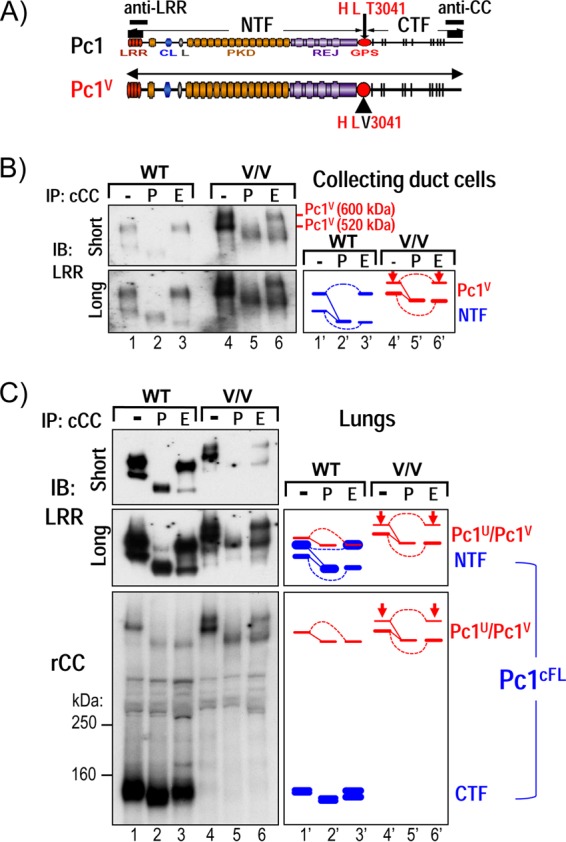FIG 2.

GPS cleavage is not a prerequisite for Pc1 intracellular trafficking. (A) Schematic structure of WT Pc1 and noncleavable Pc1V with a T3041V substitution at the HL↓T3041 cleavage consensus site, corresponding to the length of Pc1U. (B) N-glycosylation modification of Pc1 from collecting duct (CD) cells derived from WT and Pkd1V/V (V/V) postnatal kidneys was analyzed by IP with anti-cCC, either untreated (−) or treated with PNGase F (P) or endo-H (E), and then detected by IB with anti-LRR. In Pkd1V/V CD cells, the upper Pc1V band is endo-H resistant (arrow), and the lower Pc1V band is endo-H sensitive, as indicated in the schematic diagram. Note that Pc1U from WT CD cells was not detectable (lane 1). (C) N-glycosylation modification of Pc1 from WT and Pkd1V/V (V/V) postnatal lungs was analyzed for anti-cCC IP products with anti-LRR and anti-rCC, similarly as described for panel B. Of note, Pc1U is weakly detected in the WT lungs, indicated by a red line in the right diagram.
